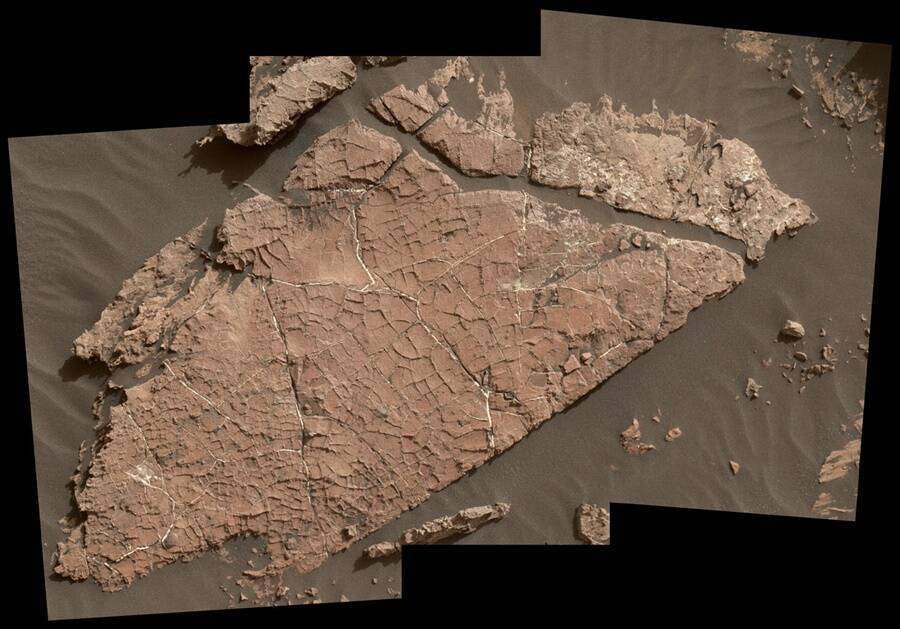"What is the evidence against the possibility of life on Mars? The astonishing fact is that there is none."

Wikimedia CommonsNASA’s Viking lander on Mars in 1976, the year Gilbert V. Levin says the agency discovered evidence of life on the red planet.
NASA has launched countless missions to Mars, but why haven’t they found any extraterrestrial life yet? Well, according to one former NASA scientist, they actually did.
In an op-ed published by Scientific American last week, Gilbert V. Levin, a former NASA scientist who led the Labeled Release (LR) life detection experiment on NASA’s Viking mission to Mars in the 1970s, laid bare his belief that the mission did in fact find proof of life on the red planet.
In his op-ed, Levin broke down how the LR tested Mars’ soil for organic matter.
The Viking probes inserted nutrients into Martian soil to see whether there would be any gaseous traces of CO2. If there were any, it would indicate that microorganisms had metabolized the nutrients, meaning there was a potential presence of life. Levin called the test “a very simple and fail-proof indicator of living microorganisms.”
Incredibly, the LR experiment yielded a total of four positive results. This, Levin argued, was clear evidence that life existed on Mars.
https://www.youtube.com/watch?v=e-gZpz8zuDQ[/embed
“It seemed we had answered that ultimate question,” Levin wrote. But NASA felt differently. According to Levin, the agency dismissed the results as proof that a substance was “mimicking life,” but since the Viking had not directly detected organic matter in the soil, the tests were not proof of life itself.
The scientist questioned why NASA had not launched subsequent missions to Mars with any life detection instruments to follow up on the Viking’s LR experiment results. Instead, Levin wrote, the agency was more interested in determining whether the red planet offered a habitable environment for life. He argued that that should be secondary to finding the existence of life itself.
“Life on Mars seemed a long shot,” Levin wrote. But, in retrospect, “it would take a near miracle for Mars to be sterile.”
For one, Earth and Mars “swap spit” every time one planet is hit by a comet or meteorite and ejecta from the impact is hurled into space, allowing microorganisms from one planet to hitchhike their way to the other. It has been proven through laboratory experiments that microbes from Earth could survive the environment on Mars, and even survive exposure to naked space.
There is also the discovery of water on Mars’ surface sufficient enough to sustain microorganisms; the excess of carbon-13 over carbon-12 in the Mars atmosphere which indicates biological activity; the regeneration of CO2 in the Martian atmosphere, also an indicator of microorganism activity; and a “worm-like feature” in an image taken by the Curiosity rover, resembling a fossil.

Curiosity rover/NASALast week, the Curiosity rover produced stunning images of a past ancient oasis on mars.
NASA’s Curiosity rover, which had explored the surface of Mars since August 2012, has gathered more promising evidence of Martian life since. Last year, it found organic matter, and just last week the rover found sediments from an ancient oasis that suggest Mars was once covered by salty lakes.
“What is the evidence against the possibility of life on Mars? The astonishing fact is that there is none,” Levin wrote. He urged NASA to include life detection experiments on the next Mars mission, and for an independent evaluation of the Viking LR results.
“Such an objective jury might conclude, as I did, that the Viking LR did find life. In any event, the study would likely produce important guidance for NASA’s pursuit of its holy grail,” Levin wrote.
This is not the first time Levin has been outspoken in his conviction about the LR experiment results. He stated argued as such in a speech at the Annual Meeting of the International Society for Optical Engineering in 1997, and he’s maintained a website for years.
NASA hasn’t commented on Levin’s assertions just yet, but perhaps its former employee’s comments will compel it to take a closer look at this tantalizing question.
Now that you’ve heard a former NASA scientist’s argument that life on Mars has already been proven, checkout the stunning photos of Jupiter brought back by NASA’s $1 billion probe.





